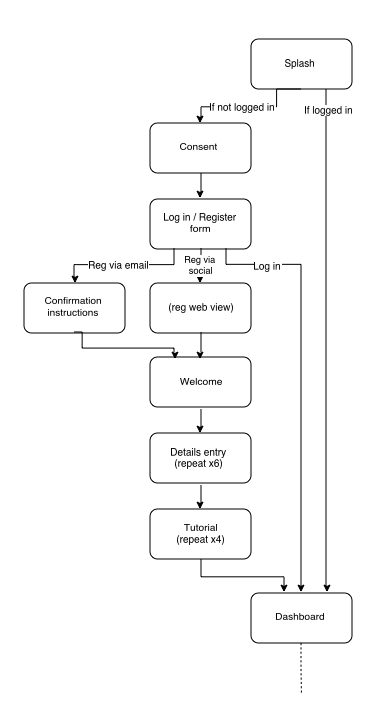
Project type: iOS App // Client: Ochsner Health System // Employer: Smashing Boxes
THE CHALLENGE
You Are When You Eat
Recent research shows that restricting eating to a 10–12 hour window in sync with the body’s circadian rhythm can support weight loss without calorie counting.
Ochsner Health System’s innovation accelerator (Innovation Ochsner, or iO) engaged our team to design a mobile app to help users adopt this “time-based eating” approach. Unlike traditional calorie-tracking tools, this app would focus purely on when you eat, not what you eat. The product was intended both for a clinical weight loss study and for general consumer use.
MY ROLE
I led end-to-end UX design from research through prototyping and testing; collaborating with clinicians, researchers, and engineers.
Understand: Discovery research, user interviews, personas
Analyze: Research synthesis, journey mapping
Design: Workshops, sketching, prototyping, design system, UI and interaction design
Validate: Usability testing with patients and staff
Understanding Our Users
We began with contextual interviews with clinicians and patients to understand motivations, challenges, and habits around eating behavior.
Key insights revealed:
Calorie counting was tedious and unsustainable.
Users wanted a frictionless way to track meals.
Clinicians needed accurate, time-stamped data with minimal user effort.
From these findings, we created personas and user flows to guide design decisions.
Rapid Ideation
To move quickly from research to solutions, we hosted an ideation workshop with clinicians and engineers.
We sketched, whiteboarded, and wireframed ideas together; validating feasibility and refining concepts in real time.
This collaborative approach helped align stakeholders early and accelerate iteration.
Testing an Insight
Logging meals multiple times per day can be burdensome; and any friction could compromise the study’s success.
During sketching, one idea stood out:
What if logging a meal was as simple as taking a photo?
A timestamped photo could capture exactly what we needed; the timing of each meal without requiring calorie entry or complex tracking.
We quickly prototyped a lightweight camera interface and tested it with users.
Feedback confirmed the concept’s value: it felt intuitive, fast, and effortless — aligning perfectly with our goal to make meal logging nearly invisible.
Outcome
The photo-based logging concept became the foundation for the app’s MVP. By focusing on ease and simplicity rather than calorie counting, we aligned the design with real human behavior and scientific intent; making time-based eating accessible to everyone.








